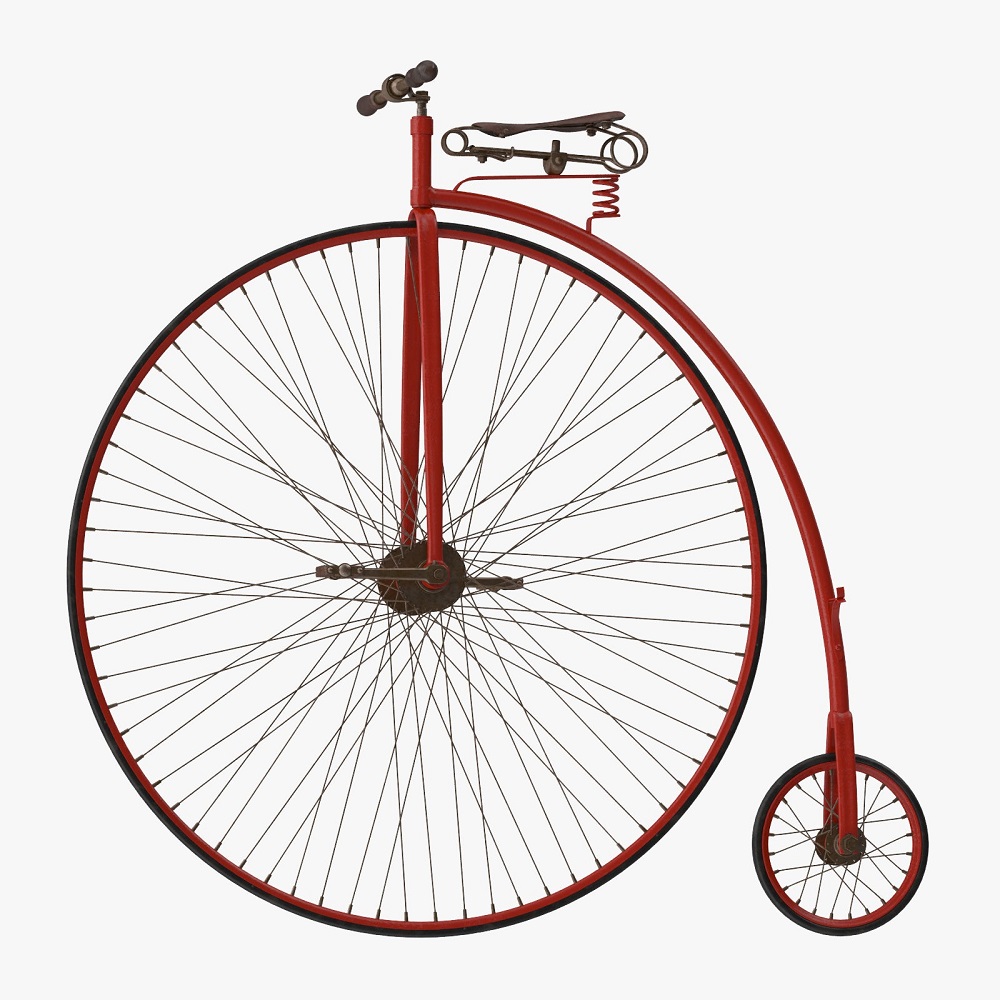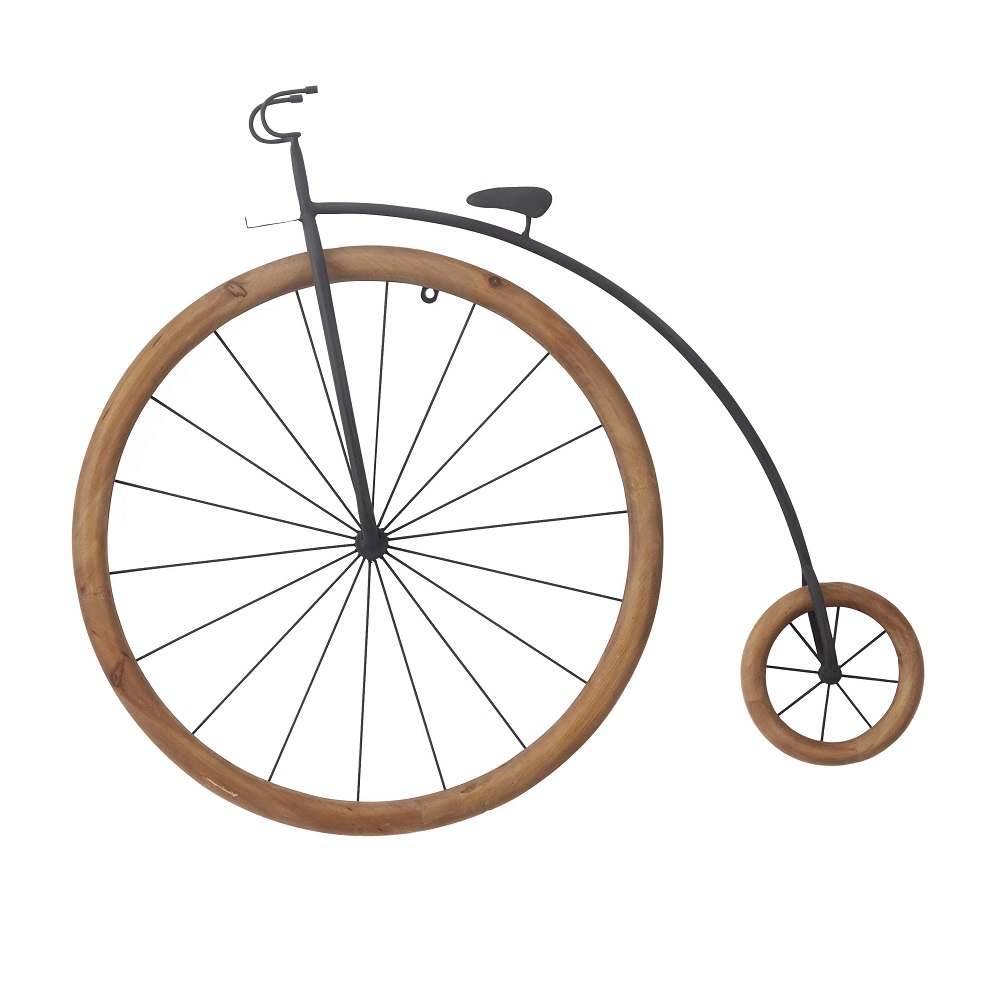The Dawn of the Penny-Farthing
As we delve into the history of cycling, the penny-farthing bicycle stands out as a hallmark of innovation. Its distinct design remains a symbol of the Victorian era’s ingenuity and has left an indelible mark on the legacy of transportation. The penny-farthing was not just a bike; it was a testament to the boldness of its age.
The Origins and Invention
The penny-farthing made its first appearance in the 1800s, during a time of rapid technological progress. It was the brainchild of James Starley, an English inventor, who introduced the vehicle around 1870. Drawing inspiration from a French inventor, Eug
e Meyer, Starley’s design improved upon the high-wheeler concept, with a significant twist—the introduction of the wire-spoke tension wheel. Meyer, known for his earlier model in 1869, is often credited as the father of the penny-farthing. The namesake of the bicycle comes from two British coins—the larger penny and the smaller farthing—mirroring the bike’s wheel sizes. With ingenuity at its core, the penny-farthing quickly became more than just transportation; it became a fashion statement and a thrilling sporting challenge of its time.
Distinctive Features of the Penny-Farthing Bicycle
Design and Mechanics: An Introduction
The penny-farthing bicycle is instantly recognizable by its disparate wheel sizes. The large front wheel towers over the small rear one, creating a striking visual that’s hard to miss. This design wasn’t just for looks; it served a functional purpose.
First, let’s talk about the big front wheel. It’s the heart of the penny-farthing. The larger the wheel, the farther you could travel with each pedal stroke. This meant you could enjoy faster speeds compared to other bikes of the time. The wheel could range up to a whopping 1.5 meters in diameter.
Then we have the small rear wheel, often compared to a farthing coin. It served as a stabilizer, helping the rider balance on this tall two-wheeler.
The bike’s seat perched high above the front wheel made the penny-farthing look daunting. Indeed, mounting and dismounting demanded skill and practice.
The handlebars sat tall and directly controlled the large wheel. Steering was a delicate affair as sharp turns could easily tip the bike over.
The mechanics were straightforward yet unusual. The pedals were directly attached to the front wheel. This setup eliminated the need for complex gear systems, which hadn’t been developed yet.
Shock absorption was another feature of the large wheel. It eased the ride over rough terrain, which was common in the Victorian era. Cobbled streets and ruts in the road were less jarring when riding atop the penny-farthing’s impressive wheel.
Penny-farthings lacked brakes as we know them. Slowing down meant skilful manipulation of the pedals, relying on leg strength and technique.
Each aspect of the penny-farthing’s design was a response to the limits of technology and road conditions of its time. It was a machine that encapsulated the era’s willingness to innovate. No wonder it turned so many heads back in the day—and still does whenever it’s spotted on the roads or in parades today.
The Penny-Farthing in Motion
Riding a penny-farthing was quite an experience. The design made for a unique combination of speed and a peculiar ride quality.
Speed and Ride Quality
The larger front wheel on the penny-farthing bicycle was pivotal for its motion. It allowed a rider to cover more ground with less effort. In fact, the big wheel equated to higher speeds. But with speed came the need for skill, particularly in handling and balance.
The penny-farthing’s unusual structure influenced the ride quality as well. The high seat provided a vantage point uncommon for cyclists of the era. This elevation, while grand, posed risks like falling from a greater height. Moreover, because the cyclist was seated directly above the large front wheel, any obstacle could result in abrupt stops. Such stops could propel the rider over the handlebars and onto the ground—a known hazard at the time.
Shock absorption did benefit from the front wheel’s size, as it could smooth out some of the bumps from the often uneven roads and cobbled streets. However, this did not negate the danger or discomfort entirely, for the lack of suspension systems still made for a bumpy ride.
The penny-farthing had no brakes in the traditional sense. Instead, riders had to use leg strength to slow the rotation of the wheel—a technique both daunting and physically demanding. This direct control system added another level of challenge to mastering the penny-farthing.
Riding a penny-farthing required a mix of courage, skill, and physical prowess. It reflected an era when cycling was both an adventurous leisure activity and a test of one’s mettle. What was unusual about the penny-farthing bicycle was not just its appearance, but the entire experience of being in motion on such a machine.
Perils of Riding a Penny-Farthing
Penny-farthing bicycles, with their unusual design, posed significant risks to riders. The height of the seat alone put cyclists at a dangerous fall distance. Falling from such a height could lead to serious injuries, or worse, if they were propelled forwards. Moreover, with the seat situated directly over the large wheel, any small obstacle could abruptly stop the bike. This often resulted in the cyclist being thrown forwards—termed ‘taking a header.’
Risks and Precautions
To cope with the dangers of riding, penny-farthing enthusiasts had to take several precautions. Here are some key safety measures they would have considered:
- Starting and Stopping Carefully: Riders had to learn how to mount and dismount skillfully to minimize the risk of falls.
- Mastering Balance: Keeping steady on the tall bike required constant balance and attention to the road.
- Avoiding Obstacles: Watching for and steering clear of road hazards was crucial to prevent accidents.
- Reducing Speed: Slowing down before descents helped decrease the likelihood of being thrown over the bars.
- Wearing Appropriate Attire: Cyclists avoided loose clothing that could get caught in the wheels.
- Practicing Technique: Frequent practice to perfect riding technique and build strength was essential.
Despite these measures, the penny-farthing remained a perilous mode of transportation. Yet, it also offered a thrill that many cycling aficionados of the time couldn’t resist.
Social Impact and Gender Dynamics
The penny-farthing bicycle did more than revolutionize transportation. It reflected the social norms and gender roles of the 19th century, particularly in the realm of cycling. The large front wheel and high seat of the penny-farthing were not only unique attributes but were also symbols of the masculine prowess that dominated the cycling scene of the era.
Masculine Dominance in the 19th Century Cycling Scene
During the Victorian times, cycling was a male-dominant sport. The penny-farthing, with its daunting height and risk factors, was considered unsuitable for women. The norms of the day dictated that women should not partake in such risky endeavors.
The attire of Victorian women, consisting of long dresses and skirts, proved impractical for riding the high-wheeled bicycle. The culture of the time saw women as delicate and in need of protection, rather than daring or athletic. Thus, cycling on penny-farthings became a pursuit exclusively for men, showcasing their physicality and bravery.
Furthermore, the penny-farthing’s design made it an emblem of status. Owning and riding one was a display of wealth and social standing. This was unusual, as it turned a mere mode of transport into a statement of one’s position in society.
Women eventually found their place in cycling, though not on penny-farthings. Instead, they rode tricycles or ‘safety bicycles,’ which came to be more associated with female riders. It wasn’t until the design of bicycles evolved to be safer and more conventional that cycling began to bridge the gender divide.
The penny-farthing was an icon of its age and an unintentional perpetuator of the gender norms. It was both a product and a reflection of the social dynamics at play during its time of popularity.

The Penny-Farthing’s Decline
The penny-farthing bicycle’s era, as awe-inspiring as it was, gradually came to an end. This section of the blog will examine how advancements in bicycle design and technology led to safer alternatives, ultimately overshadowing the iconic penny-farthing.
Innovations Paving the Way for Safer Bicycles
Innovation in bicycle technology ensured that the penny-farthing became a relic of the past. Several factors contributed to its decline:
- Development of Gears: The introduction of gear systems allowed for smaller wheels to provide speed without the need for a large front wheel.
- Pneumatic Tires: The invention of air-filled tires offered a smoother ride, something the solid wheels of the penny-farthing could not match.
- Safety Bicycle Design: The arrival of the ‘safety bicycle’ with its equal-sized wheels and lower center of gravity reduced the risk of ‘headers’ that penny-farthings were notorious for.
- Braking Systems: Modern bicycles came with more effective braking systems, allowing for safe and controlled stops.
These improvements answered the need for both speed and safety, attracting a wider audience to cycling. They marked an important transition from the perilous penny-farthing to bikes that everyone, regardless of gender or athletic ability, could enjoy. The penny-farthing, with all its quirks and dangers, had paved the way, but it was time for a new chapter in cycling history.
The Penny-Farthing in Modern Times
While the penny-farthing may have faded as common transport, it still captures imaginations today. This vintage bicycle’s unique form and history continue to charm enthusiasts and spectators alike.
Enthusiasts and Cultural Relevance Today
The penny-farthing holds a special place in the hearts of vintage cycling enthusiasts. Certain clubs and societies keep the tradition alive, organizing events and races that feature these eccentric machines. They’re not just relics, but active parts of historical re-enactments and parades.
In pop culture, the penny-farthing is a symbol of a bygone era. It’s often seen in films and TV shows set in the Victorian age as a representation of the period’s transport and status. Museums and collectors treasure these bicycles, displaying them as fine examples of engineering heritage.
Events like the Tweed Run, where riders don vintage clothing and ride classic bicycles through city streets, highlight how the penny-farthing remains relevant. This cycle speaks to a nostalgia for the past’s craftsmanship and elegance.
Today’s riders of the penny-farthing do so with a sense of adventure and historical curiosity. It’s a challenge not just of balance and speed, but of connecting with a time when cycling was a daring novelty. Indeed, what was unusual about the penny-farthing bicycle continues to intrigue and entertain, even in the modern age.
Riding a Penny-Farthing
Learning to ride a penny-farthing is unlike any modern cycling experience. It demands skill, balance, and a touch of dare-devil spirit.
The Technique and Challenge Involved
Mounting a penny-farthing is the first hurdle. Riders use the small foot-peg above the rear wheel as a step. With a push, they leap onto the saddle, poised above the grand front wheel. This could be tricky, requiring momentum and precise timing.
Once aboard, balancing is an art. The rider’s feet directly drive the large wheel without gears. It’s a continuous cycle of pushing pedals and maintaining a fragile balance. A penny-farthing has no brakes, so slowing down calls for resistance through the pedals. This is hard work and needs strong legs.
Steering is delicate too. The tall handlebars guide the large wheel, but sharp turns can tip the bike. Riders must be cautious, especially at higher speeds.
As for challenge, each ride is a test of nerve. The rider sits high up, braving potential falls with every bump and rut. Penny-farthings were high-society toys but also risky pursuits pushing the limits of 19th-century cycling.
In essence, riding a penny-farthing is an act of connecting with history—a throwback to what was unusual about the penny-farthing bicycle and its bold riders.




